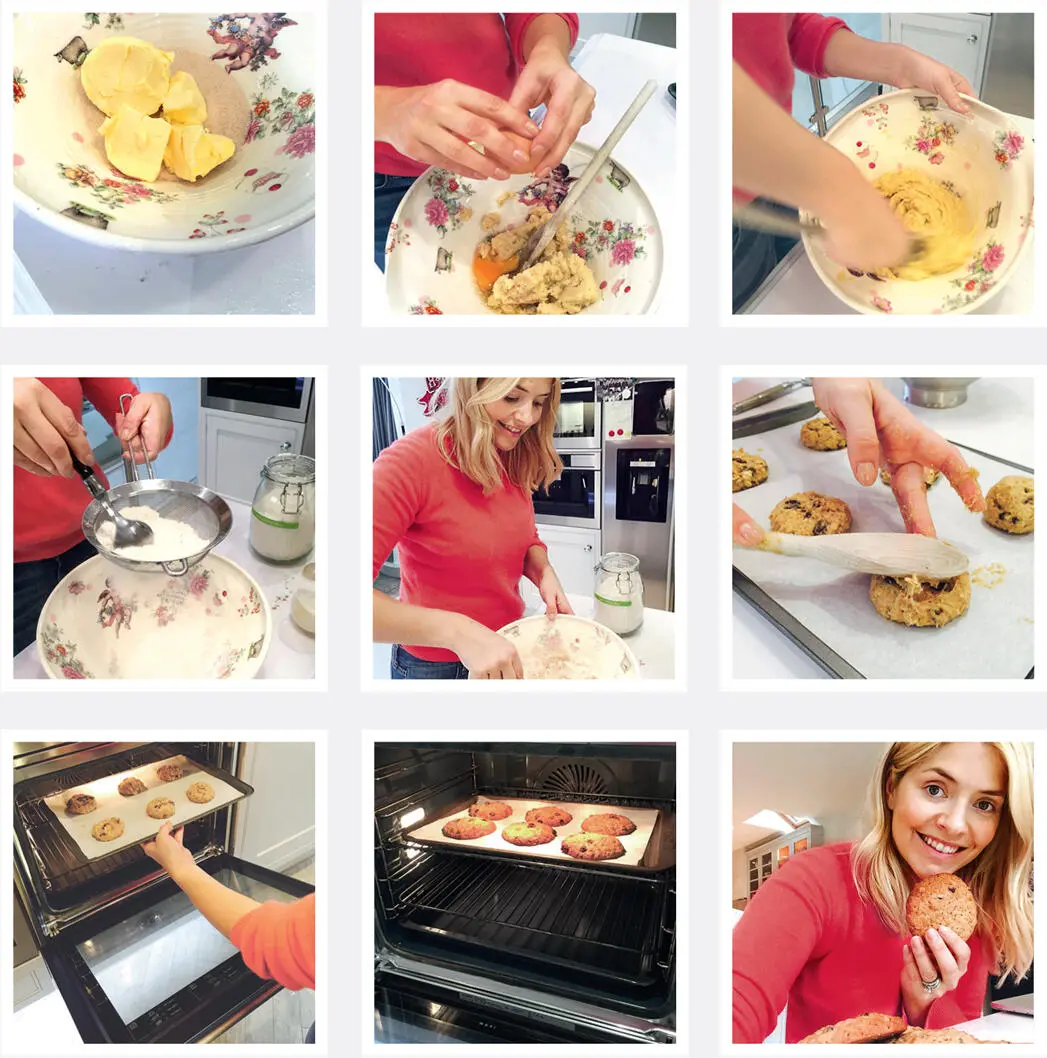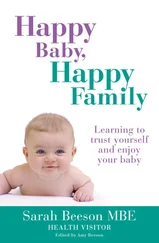
Breastfeeding bracelets If you wear a bracelet on the arm corresponding to the breast you last fed from (so your right arm if you fed from your right breast), you’ll never forget which side to use for the next feed. There are lots of lovely mummy bracelets available, or any old hair band will do – just make sure it’s not too tight!
© Shutterstock.com
What to eat whilst breastfeeding …
Your diet It’s often difficult to keep track of mealtimes in the early weeks when you’re so busy with your baby, but try not to skip meals – you need to be well nourished to produce a healthy milk supply. Now is not the time to eat less to lose weight – the old adage of making sure you get your five portions of fruit and veg a day, and a good balance of carbohydrates, protein and dairy foods, is never more important. Breastfeeding can make you extra-hungry so try to reach for a healthy snack, such as a yoghurt or some wholegrain toast, rather than the biscuit tin. These are some other foods that can help improve the quantity and quality of the milk you are producing:
• Oatmeal
• Green leafy vegetables, e.g. spinach
• Oily fish
• Lentils and pulses
• Brown rice
• Nuts and dried fruit
• Fennel and fenugreek seeds
Your baby’s tastebuds How a baby reacts to your diet can vary and, whilst it’s good for the baby to experience different tastes and smells through your breast milk, it’s a case of trial and error. Some mums don’t think twice about eating spicy foods whilst breastfeeding, as it has little or no effect on the baby, but others might find their baby really struggles to digest the milk. Some babies might show signs of lactose intolerance through mum eating a lot of dairy. If you think your baby is suffering in some way (diarrhoea, eczema, bloating, constipation, to name a few symptoms), try eliminating certain foods from your diet to see if there’s an improvement. Don’t overdo it on caffeine and alcohol as both can affect your baby when passed on via your milk supply.

Water I always made sure I had a large bottle of water to hand before I sat down to feed, as I’d quickly become really thirsty. It’s also essential to stay hydrated when you’re breastfeeding as it’s very important for breast-milk production.

courtesy of the author
Cookies … and milk! …
A friend gave me this recipe for lactation cookies. I don’t know whether it was just a placebo, but I definitely felt they made a big difference to my milk production. The magic active ingredients are brewer’s yeast powder (which you can buy from all good health stores), flaxseed and some good-quality rolled oats. I’ve added raisins, but experiment substituting (or adding) things you love. Good flavour combinations are cranberries and white chocolate chips, and dates and walnuts.
The magic ingredients
—
2 tbsp milled flaxseed
220g unsalted butter, softened
310g golden caster sugar
2 eggs
1 tsp vanilla extract or ground cinnamon
3 tbsp brewer’s yeast powder
1 tsp salt
280g self-raising flour
130g rolled oats
150g raisins
—
Makes about 18 cookies
1. Preheat oven to 180°C/350°F/Gas mark 4 and line a baking sheet with greaseproof paper.
2. Mix the flaxseed and 4 tablespoons of water together in a mug and leave for about 5 minutes.
3. In a large bowl, beat together the butter and caster sugar (or use a food mixer). Add the eggs and beat in, followed by the vanilla extract or cinnamon and the flaxseed mixture.
4. In a separate bowl, sift in the brewer’s yeast, salt and self-raising flour and mix together. Add this to the wet ingredients and mix well.
5. Stir in the oats and raisins (or whatever extra ingredients you’ve chosen), so that they’re evenly dispersed through the dough. If you’re using an electric mixer, you should do this part manually with a spoon.
6. Take a lump of dough (roughly a heaped dessertspoon) and, with your hands, roll into a ball. Place on the baking sheet, flattening the ball slightly with the back of a wooden spoon.
7. Repeat with the rest of the mixture, leaving a decent-size gap between the cookies because they spread as they cook. I find six balls in two rows of three work best in terms of them not sticking together.
8. Bake for 12–15 minutes, until golden. My oven produces perfect results after 14 minutes, so it’s trial and error!
9. Remove from the oven and set aside for 5-10 minutes to firm up. Then transfer to a wire rack to cool completely, or dig in whilst still warm!
Switching to formula …
You’ll have been told that the official guidelines are to feed your baby solely on breast milk for the first six months. But sometimes you may decide that breastfeeding either isn’t for you or isn’t for your baby, and the reasons for this are broad and wide. Whatever your reason, you’ve got one and that’s good enough for me – and it should be good enough for anybody else too (family members, midwives, health visitors, fellow mums!). Some possible reasons for calling it a day on breastfeeding are:
• You’re not making enough milk to satisfy your baby so she’s not gaining weight.
• You’ve been ill and, whether or not that ended up in a hospital stay, your milk production has lost momentum.
• You’ve had mastitis (painful engorging of the breasts – see here), which can sometimes lead to your milk supply drying up.
• You’re simply too tired or overwhelmed by the breastfeeding schedule.
If you’ve reached this point and are feeling dreadful about it, ask yourself how many people you know who weren’t breastfed. Do you think it’s had a detrimental effect on their lives? The answer is likely to be … NO! So why do we put so much pressure on ourselves? A contented baby and equally contented mummy is the most important thing, so be at peace!
HOW TO:BREASTFEED
Getting it ‘right’ …
It amazes me how newborns put onto the breast immediately try to latch on. It’s as if they know more than you and are saying, ‘Come on, Mum! I know how to do this!’ Did you know that your newborn just happens to be able to see as far as the distance from your nipple to your nose, so as she is feeding your face is the clearest thing to her? And that your nipples are expanded and darkened during early motherhood so that your baby can find them easily? Mother Nature really does think of everything!
To be able to feed your baby is a special bond, but there are plenty of other opportunities to bond – don’t worry!
But, remember, no two babies are the same. You might be a milking machine for your first baby and then a complete novice with the second. Or you and your baby just might never meet in the middle. The bottom line with breastfeeding is if your baby is happy and gaining weight, you’re doing it right.
To begin with, there are many things to try: where and what time to breastfeed, how to position yourself and the baby, how the baby latches on. You may be told that if you’re doing it properly, breastfeeding won’t hurt. Rubbish! A good friend of mine is a maternity and breastfeeding expert. Now she has her own children she feels insanely guilty that she told so many mums that it shouldn’t hurt. It wasn’t until she attempted to put all her advice into practice that she realised she didn’t have the answers after all! Unfortunately it’s always likely to hurt for the first couple of weeks, but once you’ve got the hang of it, it should get easier. If it doesn’t, seek advice and help from your health visitor, midwife or GP. I’ve also covered breastfeeding issues and resolutions in the last section of this chapter (see pages here).
Читать дальше














